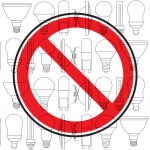There are many considerations when refurbishing or constructing a building, and the lighting installation can feel like just another box which needs ticking before reaching the finish line of the project. Is it easy to install? Is it easy to maintain? Is it low energy?
Of course, these are key points to consider, but factoring in the other qualities of the lighting installation can make the difference between an ok result and a great result.

How can light have a temperature?
Correlated Colour Temperature (CCT) is measured in degrees Kelvin (K) and relates to the appearance of white light, ranging from “warm” to “cool.”
Typically, the warmer the light, or lower the Kelvin, the cosier the light feels. A cooler light, with a higher Kelvin, creates a feeling of greater energy and focus.
When taking a moment to consider this, it can be easy to conjure examples of warm and cool light; intimate and homely restaurants with yellowy-orange candles or log fires, vs efficient and secure-feeling car parks, or doctor surgeries with bluer white light. And equally, if you imagine swapping warm for cool, and cool for warm light in these same environments, you can quickly see how it might make those spaces feel less natural, and not optimal for the use of the space.
State of Flux
The amount of light produced by a light fitting is called the Luminous Flux and is measured in lumens (lm). The lower the lumens value, the lower the light output. Typically, the lower the light output, the lower the wattage, so it is important to strike a balance between the amount of light and corresponding power consumption to ensure energy isn’t being wasted on too much light.
However, the more intricate the task, the more light is required to do it comfortably. For example, an office requiring sufficient light levels on the desk for reading and writing could be lit by 3500lm light fittings spaced in a 3m grid, but a corridor which is only used by people passing through could be lit by 1700lm light fittings spaced in a line 2.4m apart.
Sometimes it can be a challenge to figure this out, so lighting designs created by specialised software can be utilised to produce a lighting layout which achieves the right light levels. Find out more about Eterna’s Lighting Design Service here.

Choices, Choices
There may be practical reasons for choosing a specific CCT and Luminous Flux, but ultimately it can boil down to personal preference, and a change in a client’s opinion midway through a project can prove a challenge if a fitting has already been sourced. However, there is an increasingly popular trend towards CCT and/or Power selectable light fittings which could alleviate this pressure.
This type of light fitting can create multiple lit effects thanks to its “selectable” feature; a switch to select warm, cool, or neutral white light, and another to select the power consumption and thus the light level, all built into the product itself. If the same product has multiple uses, and suits multiple preferences, it can work much harder for its investment.
This is a great solution for electrical wholesalers who can ensure they are always stocked with a range of CCT options and power options, whilst only needing to stock one product line.
A fantastic example of this type of multi-purpose fitting is Eterna’s Fresh Prince Range of ceiling and wall bulkheads which are also available with an emergency battery supply or microwave sensor control options, and come with 5 year warranty as standard.
Still need support to find the right light for the job? Get in touch with us today




